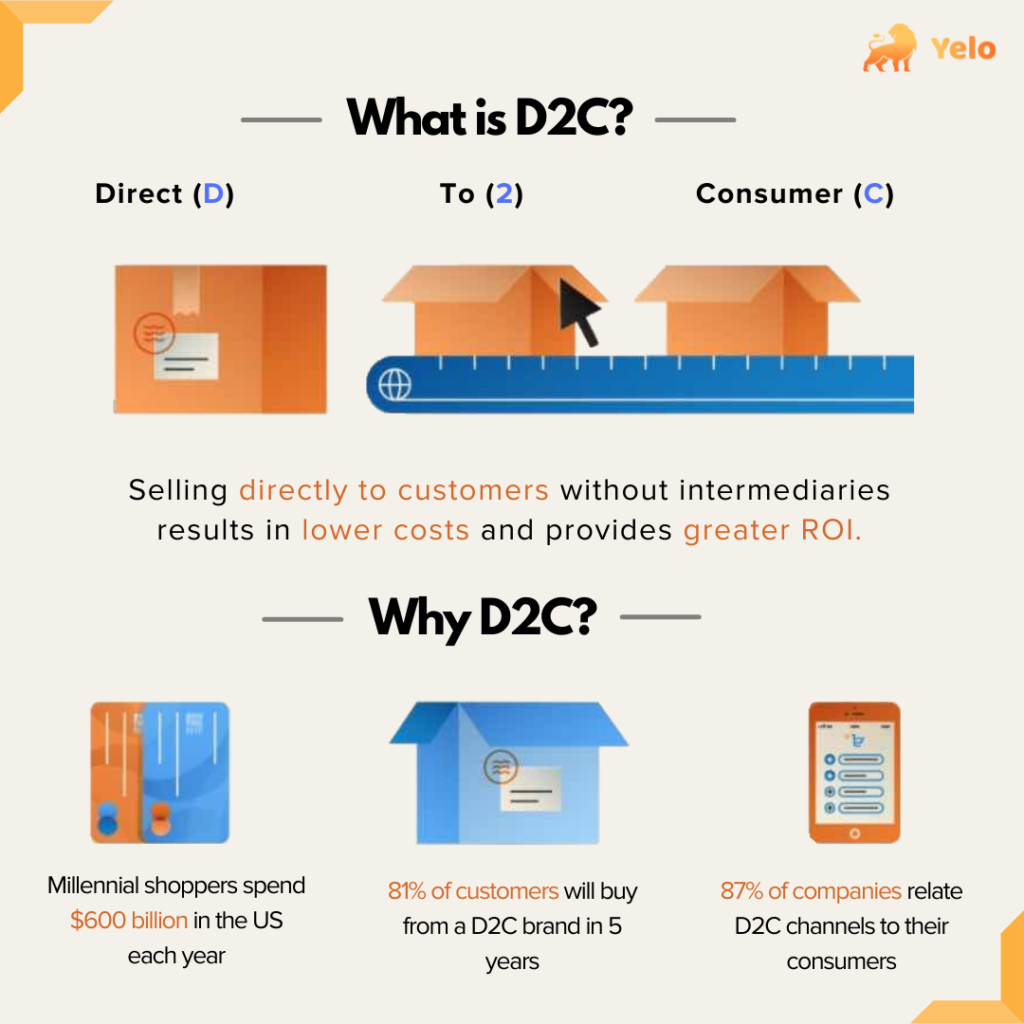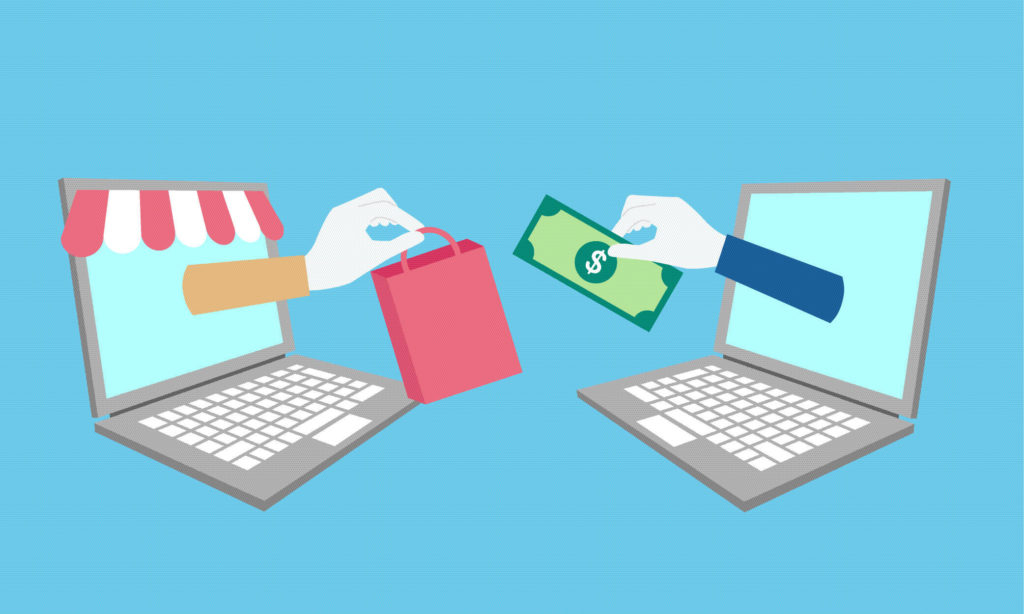
- Products
- Solutions
- Learn
- Partner
- Try Now
“Loyal customers, they don’t just come back, they don’t simply recommend you, they insist that their friends do business with you.”
– Chip Bell

Every business has a common goal: sustainability and growth.
To achieve this goal, brands must look back and reassess their strategies after a while.
A fundamental principle of business is that it must be dynamic. I.e., change their approach from time to time to adapt to the changing needs and wants of the customer. Customers genuinely decide if a business will succeed.
When talking about reaching out to customers and adapting to their needs, one thing has caused a frenzy in today’s market.
- What is a Direct-To-Consumer (D2C) Model?
- What is a hyperlocal business?
- Direct-To-Customer through hyperlocal business model
- Example of D2C through hyperlocal
- Conclusion
Selling Direct-To-Consumer through Hyperlocal.
Let’s break down the term and understand what the business model is all about.
What is a Direct-To-Consumer (D2C) Model?
Direct-to-consumer (DTC) marketing refers to selling products directly to customers without the use of third-party retailers, wholesalers, or other intermediaries.

In a direct-to-consumer (D2C) model, any seller or producer who wants to sell their items directly to their customers can create an online platform. They can promote it on various social media platforms, bypassing the middleman.
What is a Hyperlocal business?
A hyperlocal business in its true meaning is going local in your industry.
In straightforward terms, Hyperlocal business can be defined as an online business that caters to the on-demand needs of its customers by supplying them through local offline stores, mediated through an online platform.
Industries such as food, grocery, laundry are just some examples that fall under a large umbrella that can easily cater using this business model.
Availability of features such as geo-mapping added to the current conditions with the pandemic has created a pathway for this business model to expand rapidly.
Understanding Direct-To-Customer through hyperlocal business model
From a customer perspective
During the pandemic, there has been a 360-degree shift in the customer’s buying persona. Customers who earlier relied on physical stores to get products quickly are now more inclined to go for e-commerce shopping. It offers them an opportunity to procure their required supplies from the safety of their homes.
Along with this, customers don’t want traditional e-commerce delivery times of a few days when they have an option to get something delivered in a few hours or even minutes.
A hyperlocal D2C business model is catering to precisely these needs by delivering goods to the consumer in a short period.
From a business perspective
Brands in today’s time need to go ahead and grasp as many opportunities as they can to generate revenue. The hyperlocal marketplace provides enormous scope to capture these. to the companies due to its advantages.
Advantages of selling D2C
- A greater understanding of consumer preference
D2C has provided a way for manufacturers to understand what the preference of the customers is direct. When brands sell directly-to-consumer, they get a direct response. As a result, that information can be used to focus and improve on their existing services.
- Increased control over brand image
When selling D2C, brands have a greater degree of control over their products and their selling methods. Instead of selling through an aggregator, when a brand sells through their platform, they are free from any constraints that the aggregators might have put forward.
- Strengthened brand loyalty
If a consumer buys from a D2C channel compared to an aggregator, it shows a strong brand loyalty from the customers. A purchase generated through a third-party platform can also be because the buyer is a customer of the selling platform rather than the actual brand itself. But when that purchase is made through a brand’s D2C platform, the buyer is undoubtedly loyal to the brand.
- Greater profit margin
By selling D2C, brands eliminate intermediaries in the supply chain as they are directly selling to customers. This allows brands to enjoy a more significant profit margin as the cost of having a middleman is eliminated.
It is time to leverage the benefits of the D2C model with your business plan and mark the golden beginning of your success.
Let’s understand this better with an example.

Dominos – An Example Of Selling Direct-To-Consumer through Hyperlocal
Dominos is a perfect example of selling Directly-To-Consumer through hyperlocal.
It has a delivery platform in place through which caters to its customers. Apart from this, Dominos also takes orders through third-party platforms.
The critical difference between the two is that Dominos always provides more discounts on their platforms than the other platforms. The reason behind this is that they enjoy a more significant profit margin when selling Directly-To-Customers and, as a result, can afford to give more discounts.
They take orders through their platform and then further direct that order to their nearest outlet. By doing so, they are delivering on a hyperlocal platform, creating the ideal D2C through the hyperlocal business model.
Conclusion
To sum it up.
The D2C business model has taken the market by storm and is here to stay. By focusing on Direct-To-Customer through hyperlocal, brands can take advantage of this new sector that has come up.
The amplified ROI of the D2C Business model with an average of $100 million in the previous year is quite fascinating. Remember, last year was the year where the world witnessed the dark chapter of economic stepping down. The Direct-To-Consumer future looks strong and bright as significant giants are entering the game.
If you want to build a Direct-To-Consumer through hyperlocal business model, then check out Yelo!
The best timing is to strike when the iron is hot! If there are any questions or apprehensions, please jump on a virtual coffee meeting with us. Let our experts help you address your concerns swiftly to make the most out of this opportunity.
Subscribe to stay ahead with the latest updates and entrepreneurial insights!

Subscribe to our newsletter
Get access to the latest industry & product insights.





















